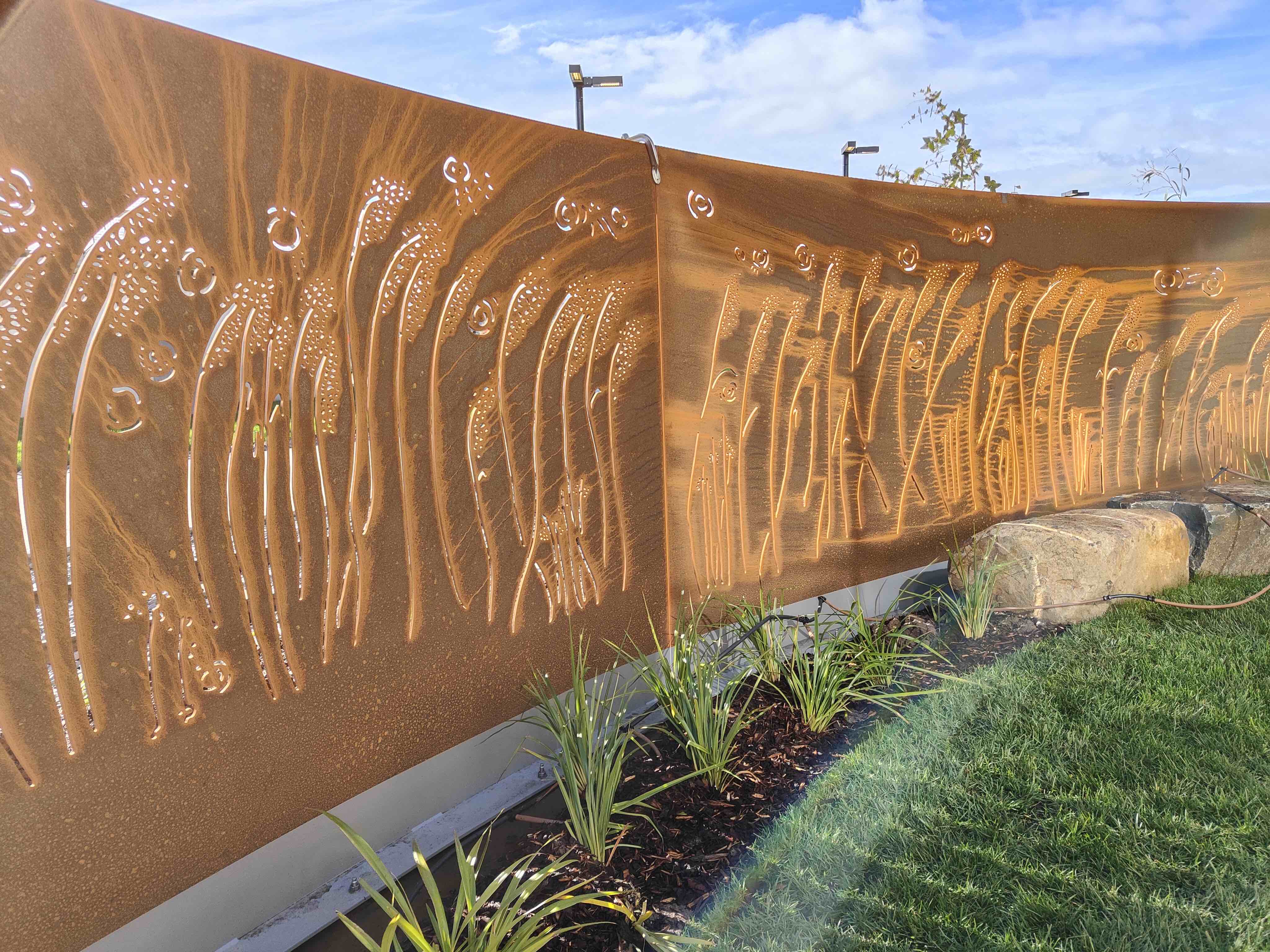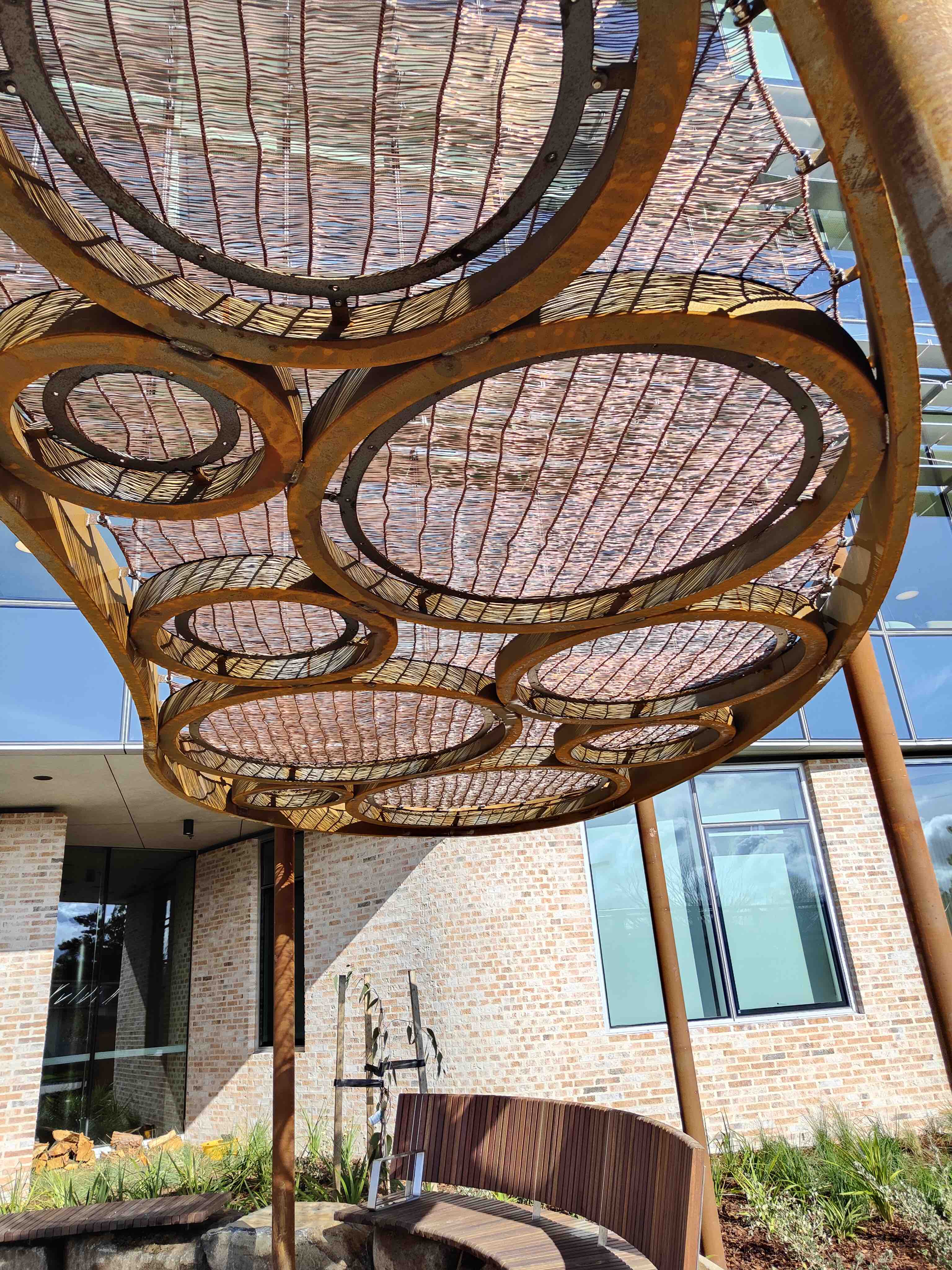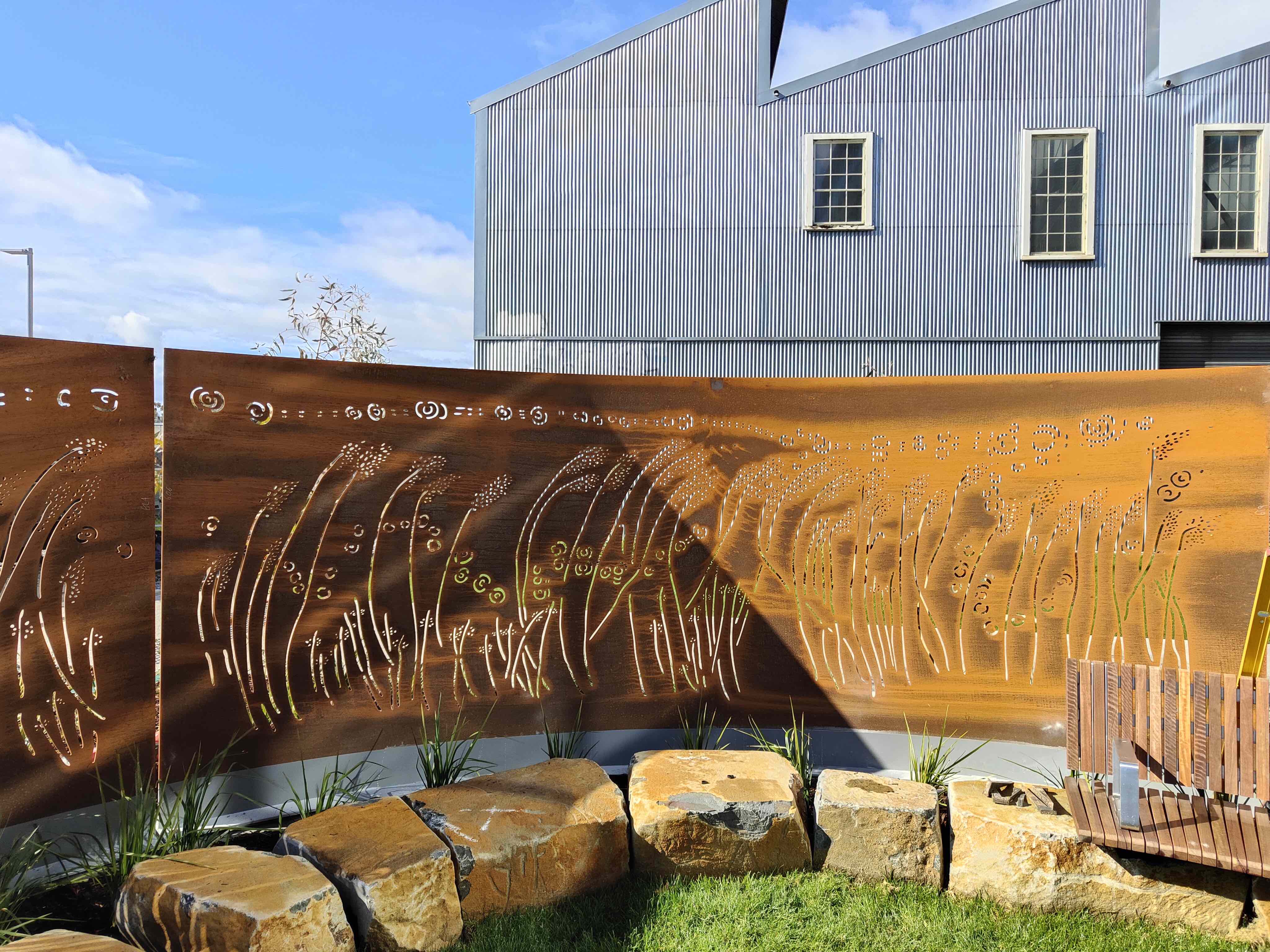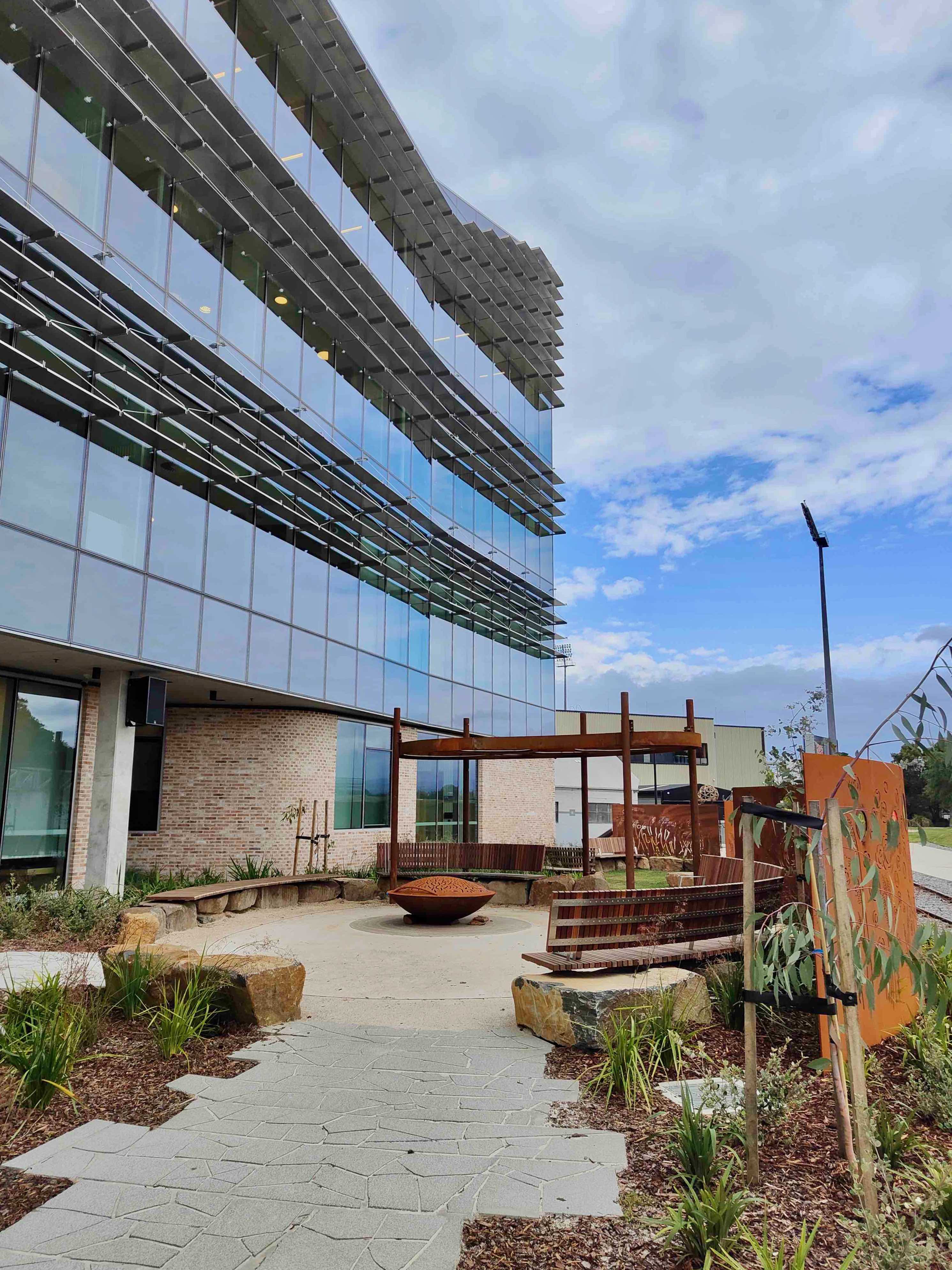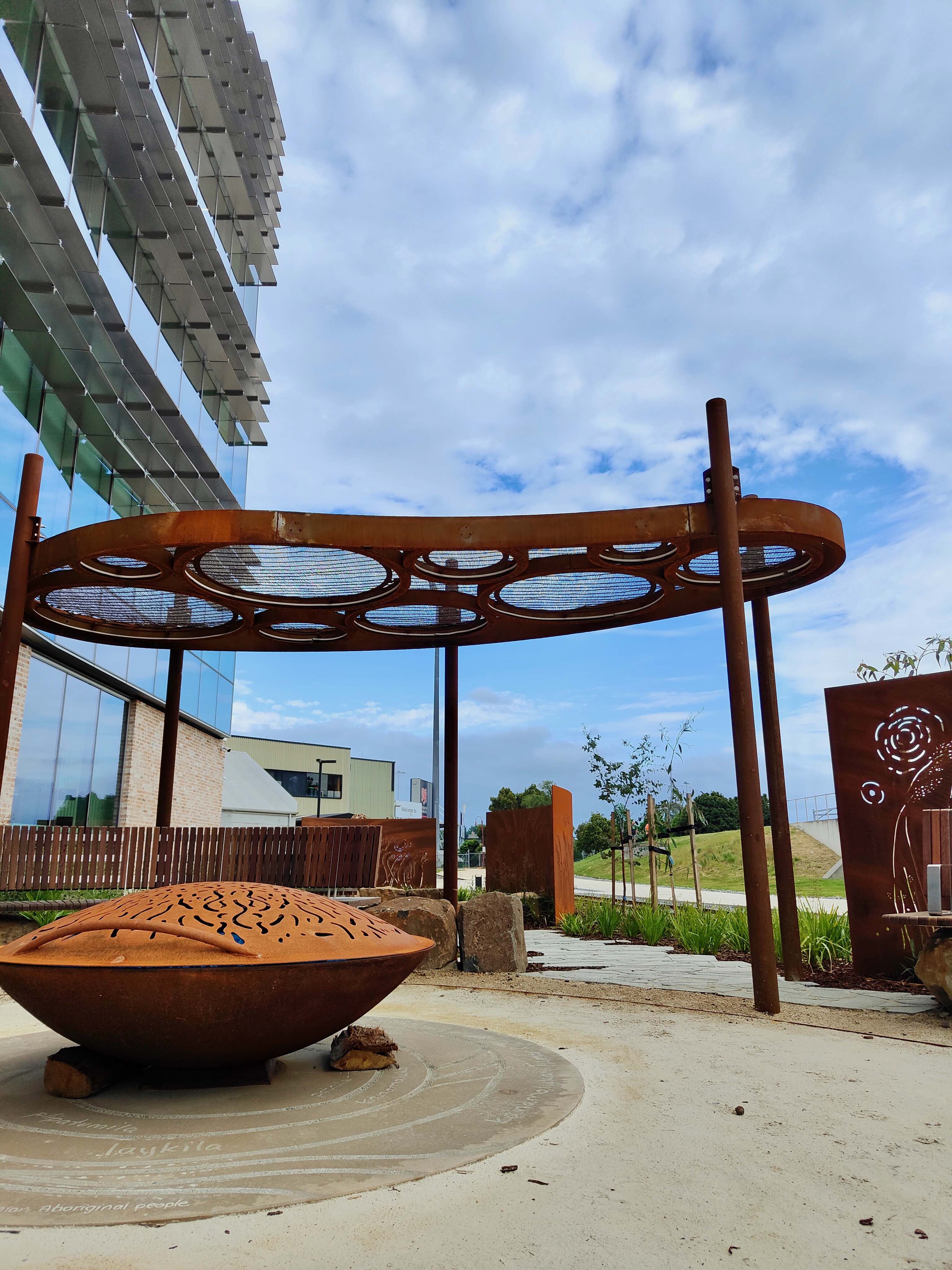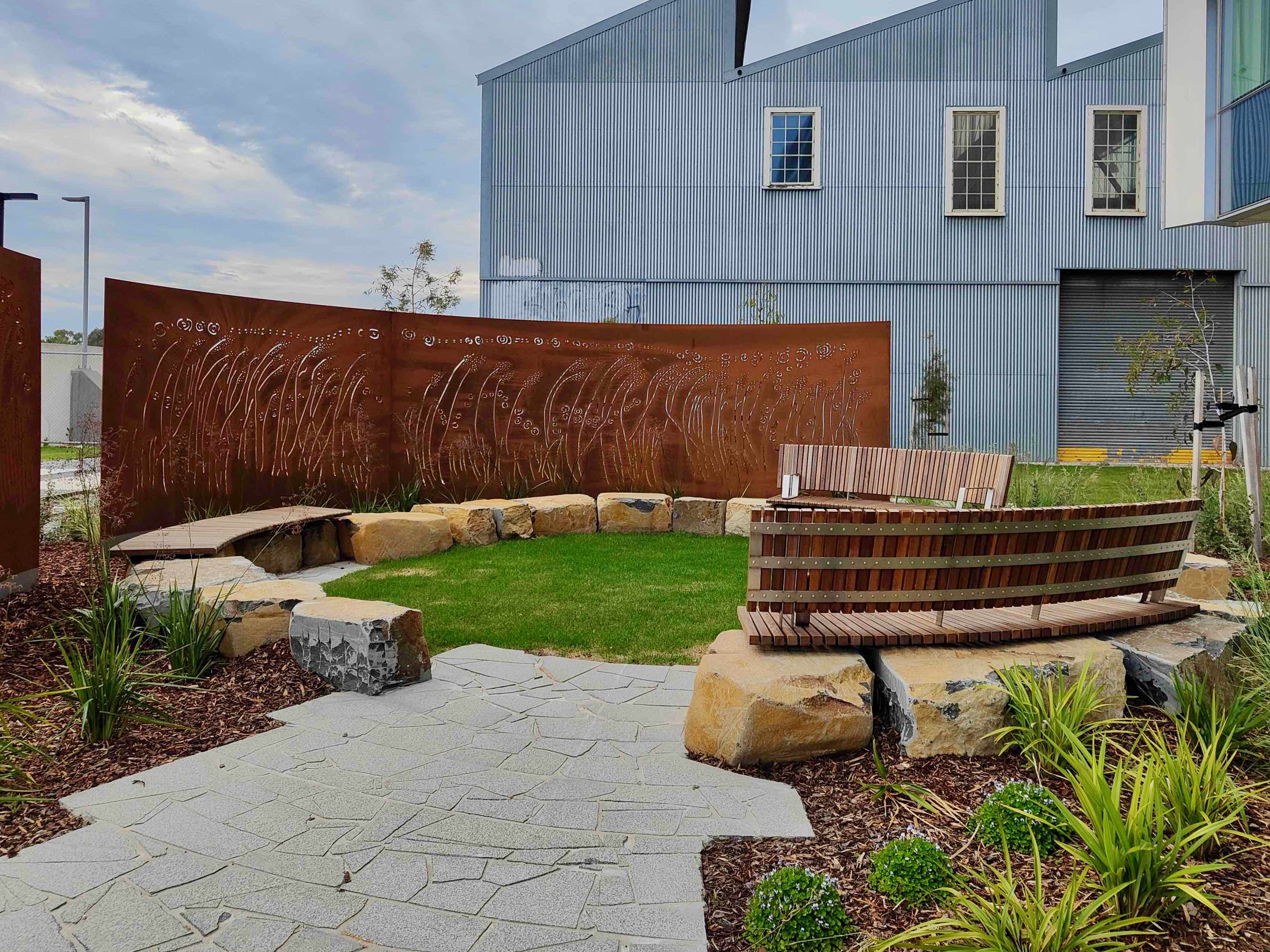Outside the north-eastern entrance of the University of Tasmania’s newest campus building at Inveresk is a flourishing landscape embedded with traditional knowledges.
The Riawunna Garden at River’s Edge features native plantings, a performance space and four distinctive artworks that have been imagined by proud Tasmanian Aboriginal artists Genie Battese and Lynne Spotswood.
The pair were commissioned to design screens, seating, a shade shelter and fire pit cover, drawing their inspiration from Country, community and culture.
“We were walking along laykila/the North Esk River looking at all the reeds, the grasses and the river flow, all the noises and the smells, and just listening. That’s when we got the idea that we’d have the theme of rivers and reeds in our artwork,” Lynne said.
“Freshwater is also essential, and so is fire, so we incorporated those two elements in the commission along with our community connections and palawa kani – our language.”
Working closely with the University’s project team, architects at Wardle, T3D Studios and ASPECT Studios, Genie and Lynne conceptualised the designs for objects symbolising the spirits of Aboriginal people past and present, moving through the land and connecting with nature.
Family and community, and native reeds and grasses are represented in the metal garden screens through laser cut patterns and glass inserts.
The element of fire is visible in the design of the fire pit lid. The word patrula (fire) is inscribed directly below, while kanamaluka (Tamar River) laykila (North Esk River) and plipatumila (South Esk River) are etched in the surrounding pavement, acknowledging the site’s freshwater connection.
The traditional practice of basket-weaving, and a style unique to lutrawita that’s passed down through families is the inspiration behind the seat and shade shelter designs.
The shade structure’s canopy comprises nine sections representing Tasmania’s nine Aboriginal Nations and will come to house woven artworks by Aboriginal Community members in time.
“This is exciting because it provides an ongoing teaching, learning and knowledge sharing experience for community of this traditional cultural practice that Elders can pass down,” Lynne said.
“I imagine visitors of the Riawunna Garden will feel very peaceful and relaxed as it’s where people will be sitting down and yarning, and they might go and explore and hopefully reflect on the old people who would have once been walking through the freshwater and hunting and gathering there.”
“UTAS and all the people involved have been very supportive and generous with their time, and I can’t thank them enough for the way we’ve worked with them collaboratively.”
T3D Studios met with Genie and Lynne over three months to help translate their ideas into artworks by providing creative support and guidance with respect to fabrication, construction and design.
“Through a series of workshops, we worked with Genie and Lynne who spoke of their cultural heritage and identity, sharing personal stories and experiences which both informed and enriched the three artworks for the garden. I have been empowered by this exchange and connect deeply with the work,” said Amanda Kay from T3D Studios.
“Artisans such as Cygnet Wooden Boats constructed the Spotted Gum seat who used traditional wooden boat building techniques to create the curved timber aesthetic that takes its inspiration from traditional First Nations baskets. Nick Adams was responsible for the woven copper elements, and the steelwork for the Shade Structure as well as the 10mm Laser Cut Screens was fabricated by Crisp Bros & Haywards.”
Wardle and ASPECT Studios led the collaborative landscape design with Riawunna, ensuring a community-specific and culturally responsive design approach which embedded the aspirations and needs of the community.
Installation of the garden was undertaken by local firm Fairbrother as part of the construction of River’s Edge, which forms part of the Inveresk campus.
Dave Warrener, Head of Services with the Riawunna Centre for Education at the University of Tasmania, said the garden was a visible feature demonstrating that Aboriginal people are accepted and welcomed at Inveresk.
“For Aboriginal people, everything in the landscape has significance – land and waterways, plants and animals, cultural learnings, cultural activities and cultural uses,” Dave said.
“The Riawunna Garden includes a fire pit surrounded by sand for song, dance and ceremony. Because of a deep connection with the landscape, Aboriginal people need access to these culturally significant places.
“The Riawunna Garden at River’s Edge is a special place, and we thank our cultural knowledge holders Lynne and Genie for their cultural knowledges and expertise in establishing this beautiful cultural element for Riawunna and the University of Tasmania.”
To mark the transition of Riawunna to River’s Edge, a final gathering was held at the Centre's former home of Newnham earlier this year where the Aboriginal community gathered in the ceremonial area to farewell the site and reflect on more than 30 years of memories.
After the flames of the final fire had faded, the ashes were gathered and will be symbolically used this month to help light the first fire at Inveresk with the help of Aboriginal Elders Uncle Rex and Aunty Lola Greeno.
Professor Greg Lehman, University of Tasmania Pro Vice-Chancellor Aboriginal Leadership said the Riawunna Garden was a wonderful example of how the University meaningfully engaged with its local communities.
“A key priority for the University has been ensuring we honour and embed the enduring cultural legacy of First Nations people by providing welcoming and meaningful connections with our community, culture and knowledges on all of our campuses,” Professor Lehman said.
The new Riawunna Garden is one of many Aboriginal cultural markers across Inveresk precinct, which also includes guardian stones, the pulingina milaythina welcoming space, and carpets in the Library inspired by kanamaluka that were designed by Tasmanian Aboriginal artist Caleb Nichols-Mansell.
This builds on the University’s work to involve artists who bring a diversity of voices and perspectives to create transformative spaces in new campus buildings that are sustainable, inspiring, and conducive to learning and community engagement, which everyone is welcome to explore and enjoy.



